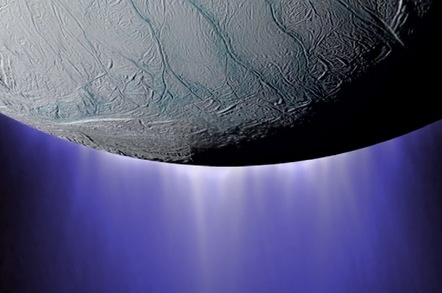
Results from computer simulations confirm that young Uranus was involved in a cataclysmic collision with an object twice the mass of Earth.

Last October, researchers spotted a long, skinny object speeding through our solar system. Additional observations have now earned the object a comet label.

Using mass spectrometry data from NASA's Cassini spacecraft, scientists found that large, carbon-rich organic molecules are ejected from cracks in the icy surface of Saturn's moon Enceladus.

A storm of tiny dust particles on Mars has prompted NASA's Opportunity rover to suspend science operations. The Martian dust storm has grown in size and is now officially a 'planet-encircling' (or 'global') dust event.

One of the thickest dust storms ever seen on Mars has been spreading since early June. The Opportunity rover - 1 of 2 active rovers on Mars - has suspended science operations.

A new analysis of data from NASA's Dawn mission suggests that organic matter may exist in surprisingly high concentrations on the dwarf planet's surface.

The finding has significant implications for whether life once existed on Mars.

Starting in early June, Dawn will begin collecting gamma ray and neutron spectra to better understand the composition of the topmost rock and soil layers while taking high-resolution photographs of dwarf planet Ceres.

The asteroid, currently nestling in Jupiter's orbit, is the first known asteroid to have been captured from another star system.

The new clue to Planet Nine's existence was spotted in data from the Dark Energy Survey. The new object we can see and observe is called 2015 BP519, and looks like it could be as big as Pluto itself.

Citing data collected by NASA's Galileo probe more than two decades ago, scientists report that giant jets of water are spouting more than 100 miles off Jupiter moon Eupora's surface.

The Mars Helicopter, a small, autonomous rotorcraft, will travel with the agency’s Mars 2020 rover mission, scheduled to launch in July 2020, to demonstrate the viability and potential of heavier-than-air vehicles on Mars.

The ExoMars Trace Gas Orbiter has released the first images from its new orbit, taken on April 15 from 400 kilometers above the Martian surface.

A planetary scientist has used careful mathematical calculations to determine the density of Mercury's crust, which is thinner than anyone thought.
In this animation the viewer is taken low over Jupiter’s north pole to illustrate the 3-D aspects of the region’s central cyclone and the eight cyclones that encircle it.